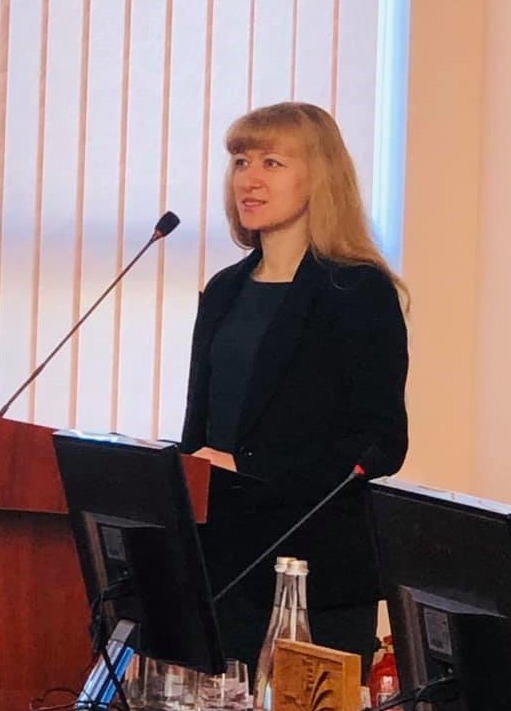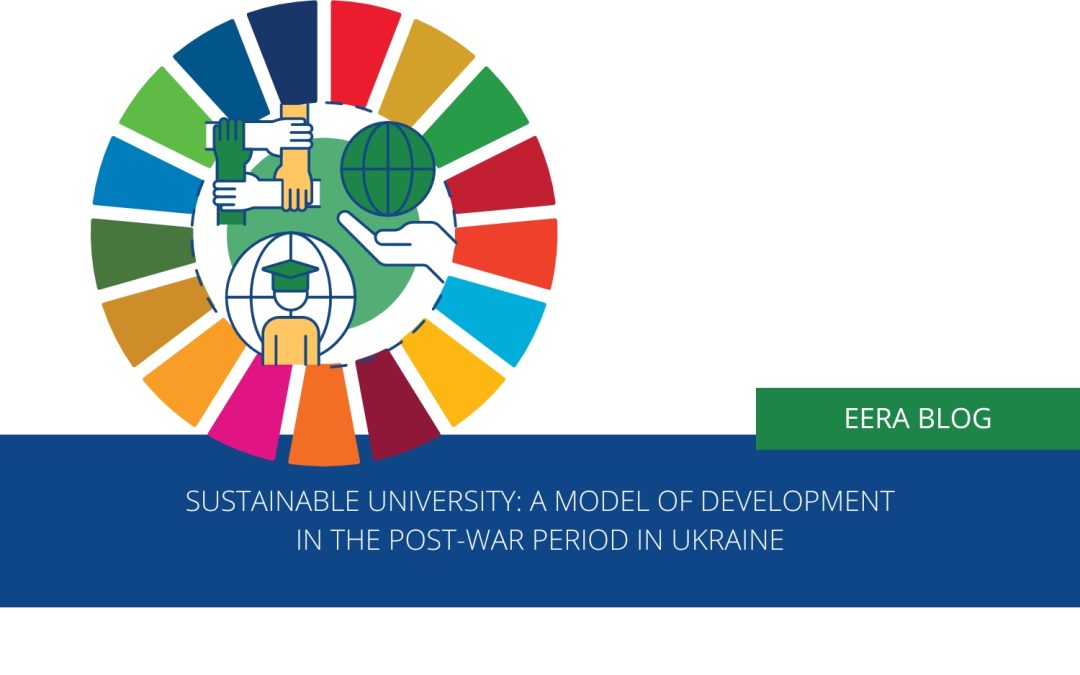Sustainable development is one of the most topical concepts of our time. Established corporations, small businesses, NGOs, universities, and governments of leading countries strive to adhere to the principles of this concept. Being sustainable creates additional competitive advantages, and positively impacts the organisation’s reputation and recognition (perception) in society.
Sustainable development is often associated only with environmental measures and initiatives (environmental protection: clean water and sanitation; climate action; life below water; life on land). However, this is an incomplete vision that limits the nature of sustainability. Although the environmental component is extremely important in ensuring sustainable development, it is wrong to reduce the idea of sustainability exclusively to ecological aspects. The comprehensive sustainable development includes also economic (decent work and economic growth; industry, innovation and infrastructure; reduced inequality; responsible consumption and production) and social (zero hunger and poverty; good health and well-being; quality education; gender equality; peace, justice and strong institutions) aspects.
Since 2022 Ukraine has been facing terrible challenges of war. Higher education institutions have been subjected to enemy attacks by Russian troops and heavy shelling, as a result of which they are wholly or partially destroyed. Educational and research infrastructure, dormitory buildings and administrative structures were damaged. But the main and most painful thing for Ukrainian universities is the loss of intellectual capital due to the death or migration abroad of Ukrainian colleagues because of military operations in Ukraine. In the post-war period, much attention should be paid to the restoration of educational institutions in the country.
We support the idea that the post-war recovery of Ukrainian higher education should be made in the framework of sustainable development. Thus, we decided to study the situation in world-leading universities and build our own sustainable development model for Ukrainian universities in the post-war period.
Sustainable development of Higher Education Institutions worldwide

Fig. 1. Conceptual scheme of the Model of the University Sustainable Development
Source: developed by the authors
This study employs the analytical method of cognition. To achieve the most objective results of the research, we studied the HEIs included in the international rating – Times Higher Education Impact Rankings (THE Impact Rankings). The study covered HEIs from all over the world, which were ranked top 50. This enabled us to eliminate subjectivity in the assessment of the progress of world universities in terms of sustainable development.
The analysis of cases of leading higher education institutions allowed us to identify key aspects and components of ensuring sustainable development. The results of the conceptualization of our model of sustainable development of HEIs are shown in Fig. 1.
The ‘core’ of the model is the institution of higher education itself, represented by the synergy of the interaction of:
– students through their unconventional, creative thinking;
– researchers through their innovative developments and inventions;
– teachers through their initiative and innovative approaches to working with young people;
– management and administrative personnel through their ability to motivate, encourage and support.
Successful implementation of sustainable development models for HEIs requires coordinated interaction among all participants in the educational process, both by themselves and with stakeholders (public, local and central authorities, business, developing relevant regulatory support, and strengthening of the institutional capacity of universities. The key factor for the success of this model is the availability of stable support for sustainable initiatives both from the management of the HEI and from partners. Such support can be material and technical, financial, organizational, consulting, expert, methodological, informational, and so on.
The main blocks of the model of sustainable development of higher education institutions are:
I – Sustainable teaching – introducing the principles of sustainability in all educational programmes, mandatory inclusion of its aspects in final qualification papers of students of various majors, as well as in the teaching methods in the framework of different academic disciplines at universities;
II – Sustainable research – orientation of fundamental and applied research, research projects of universities to achieve the Sustainable Development Goals (SDGs), identification of ways and tools to overcome obstacles to the transition of higher education institutions to functioning based on sustainability;
III – Sustainable campus – implementation of a set of measures to improve the energy efficiency of university buildings, rational use of water resources, greening the territory, introducing environmentally friendly transport within the campus, cultivating a culture of waste management, etc.;
IV – Sustainable partnership – the widest possible involvement of various groups of stakeholders in the implementing initiatives to achieve the SDGs (not only as beneficiaries of the results and effects obtained, but also as members of project teams for developing relevant projects, planning a system of measures for their implementation, monitoring the effectiveness of achieving the goals set).
The introduction of the current model of sustainable development of higher education institutions proposed in the project will allow HEIs in Ukraine to strengthen their contribution to achieving the SDGs; increase the level of competitiveness; integrate into the world research and academic community; and attract more international students. In fact, sustainable development can be defined to a certain extent as a competitive advantage of the HEI, a way to improve its recognition in society, strengthen its brand and image, and deepen social responsibility.
Sustainable university development for post-war reconstruction
The proposed model of sustainable university development can be used as the basis for post-war reconstruction. This will lead not to a simple restoration of HEIs to their pre-war level, but beyond that a transformation of their educational, research, economic and international activities in accordance with the best international practices and European values. The authors see prospects for further research in the testing of the authors’ conceptual model of sustainable university development proposed in the project.
Acknowledgement. The research is carried out within the framework of the project “Sustainable University: a model of development in the post-war period”, implemented with the support of the European Educational Research Association (EERA) and the Ukrainian Educational Research Association (UERA).
Key Messages
- Higher education institutions are more than a place for obtaining knowledge and competencies; they are the centres for accumulating the country’s intellectual capital, they are the research and training hubs, and they are the agents of sustainable changes in society.
- The world’s leading universities are demonstrating how to progressively transform their activities in line with sustainable principles. They are investing heavily in the implementation of the latest technologies for energy saving, water conservation, campus landscaping and waste recycling.
- The main directions of sustainable development in higher education institutions are sustainable development of the campus, sustainable educational programmes and courses, sustainable research, and management.
- The authors’ conceptual model of sustainable university development consists of the following blocks: sustainable teaching, sustainable research, sustainable campus, and sustainable partnership.

Dr Iryna Didenko
Associate Professor of the Department of Foreign Languages of the Faculty of Economics of Taras Shevchenko National University of Kyiv, Ukraine
British Council teacher and teacher trainer in the following projects: English for Universities, English for Civil Servants, English in a New Context: Grades 5 – 9, Teaching English in Difficult Times, SWITLO: Skills and Well-being in Teacher Learning Opportunities.
Research fields: higher education, quality assurance in HEIs, sustainable development in HEIs, assessment and motivation in HEIs.

Dr Nataliia Kholiavko
Professor of the Department of Finance, Banking and Insurance of Chernihiv Polytechnic National University, Ukraine
In 2012, Nataliia Kholiavko defended her PhD thesis on the topic “Management of Scientific and Educational International Projects in the Systems of State Innovation Policy”. In 2019, Nataliia defended her doctoral dissertation on the topic “Strategy for Ensuring the Adaptability of the Higher Education System to the Information Economy Conditions”.
Since 2017, Nataliia Kholiavko is the scientific leader and/or executor of educational projects: “Integrated Model of Competitive Higher Education In Ukraine under The Quadruple Helix Concept”; “Improving the Organization of Training for Personnel with Higher Education for the Development of High-Tech Industries in Ukraine”; “Sustainable University: a Model of Development in the Post-War Period”; “Promoting Professional Education and Active Participation of Students through the Establishment of a Comprehensive System of Mentoring and Tutoring in Higher Education Institutions”, “Distance Education for Future: best EU practices in Response to the Requests of Modern Higher Education Seekers and Labor Market”.
Kholiavko, N., & Didenko, I. (2023). World Experience of University Sustainable Development. Economics & Education, 8(1), 89-104. https://doi.org/10.30525/2500-946X/2023-1-12
Kholiavko, N., & Didenko, I. (2023). Conceptual Model of Tthe University Sustainable Development. Studies in Comparative Education, (1), 40–54. https://doi.org/10.31499/2306-5532.1.2023.288421

